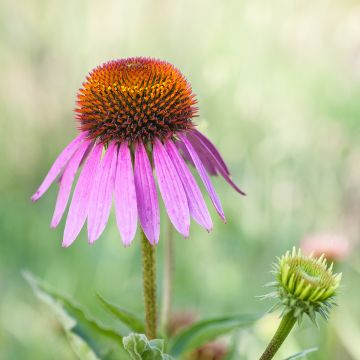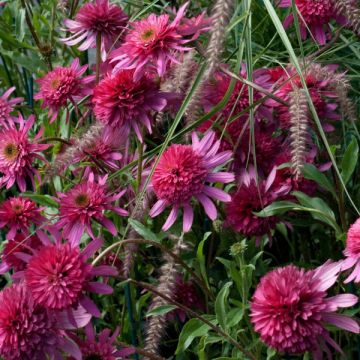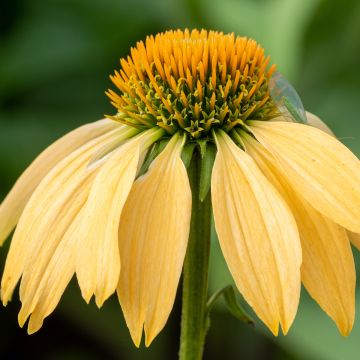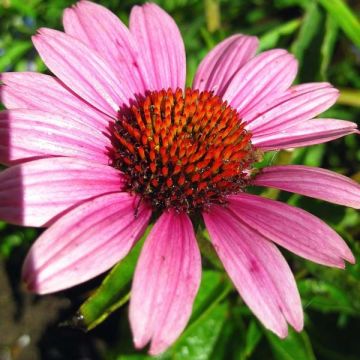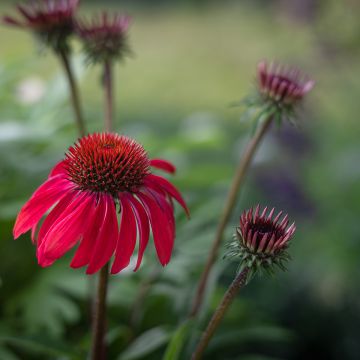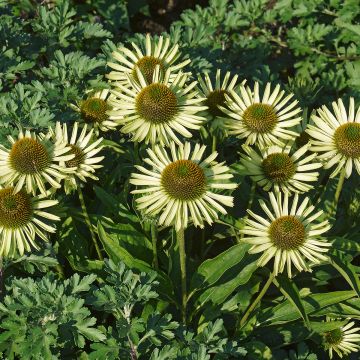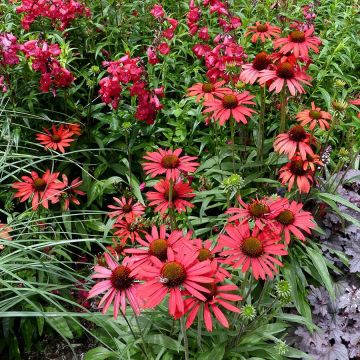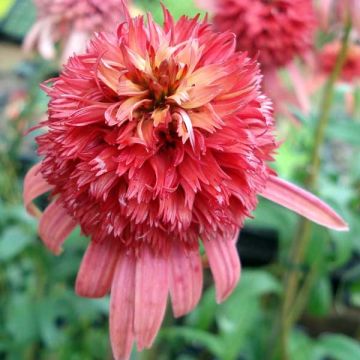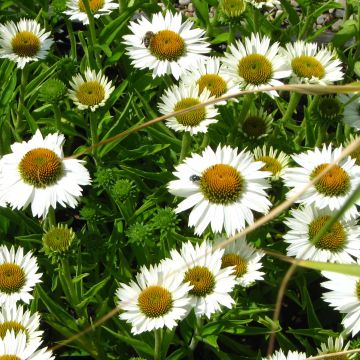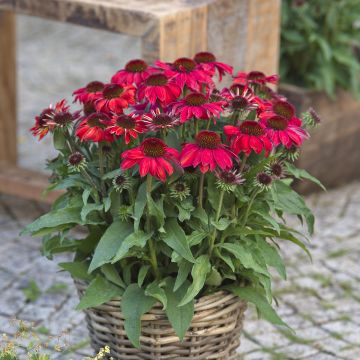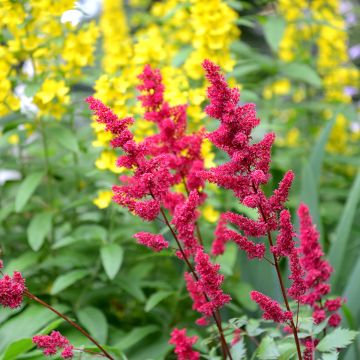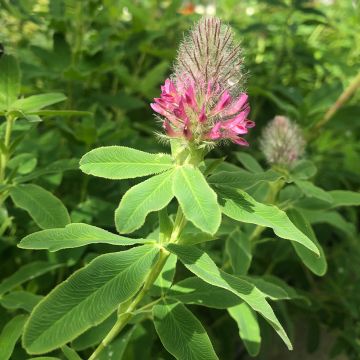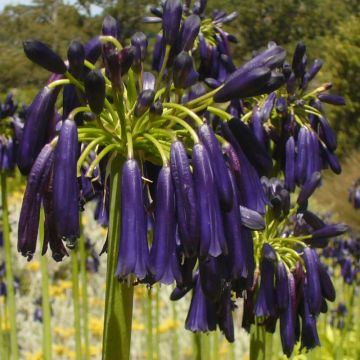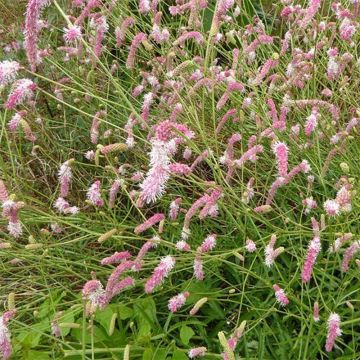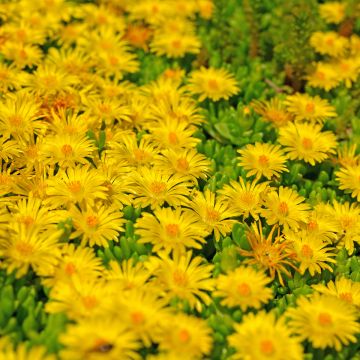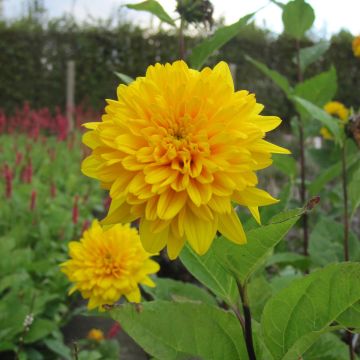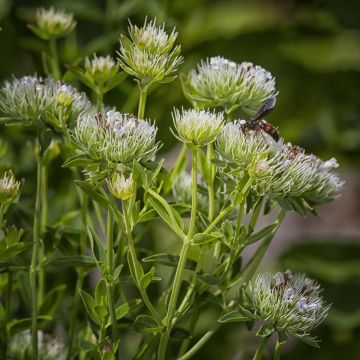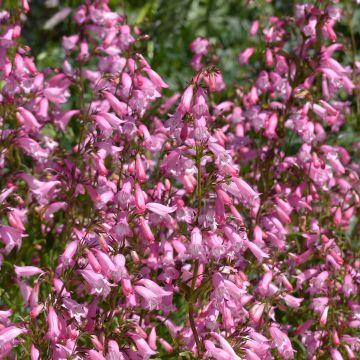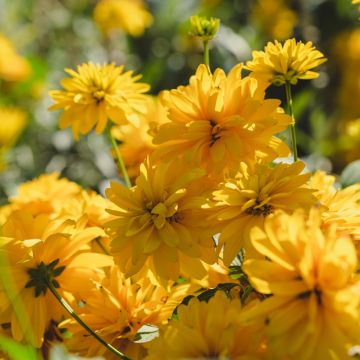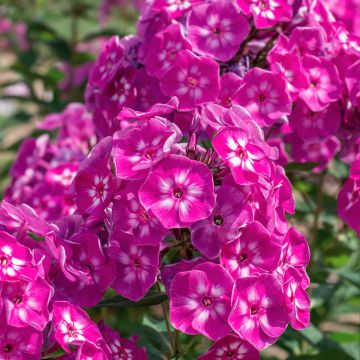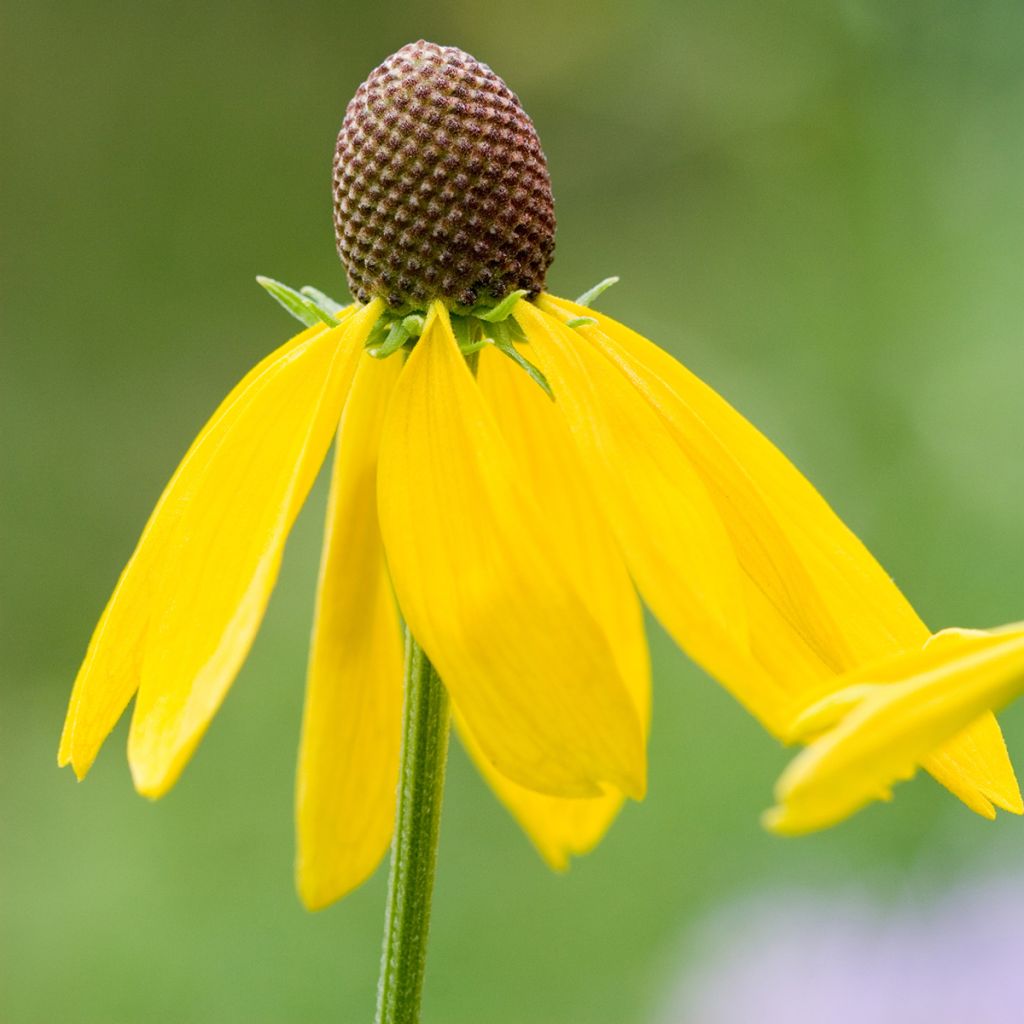

Echinacea paradoxa - seeds
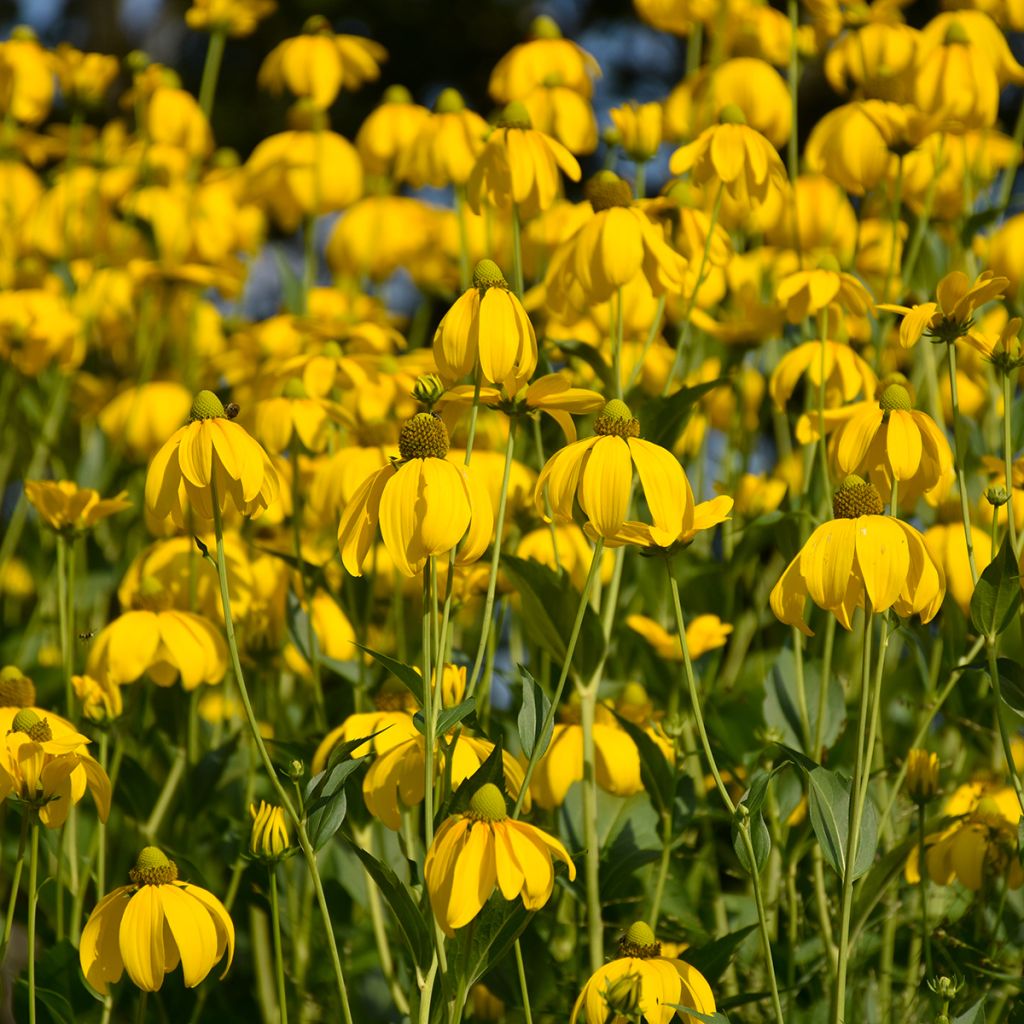

Echinacea paradoxa - seeds
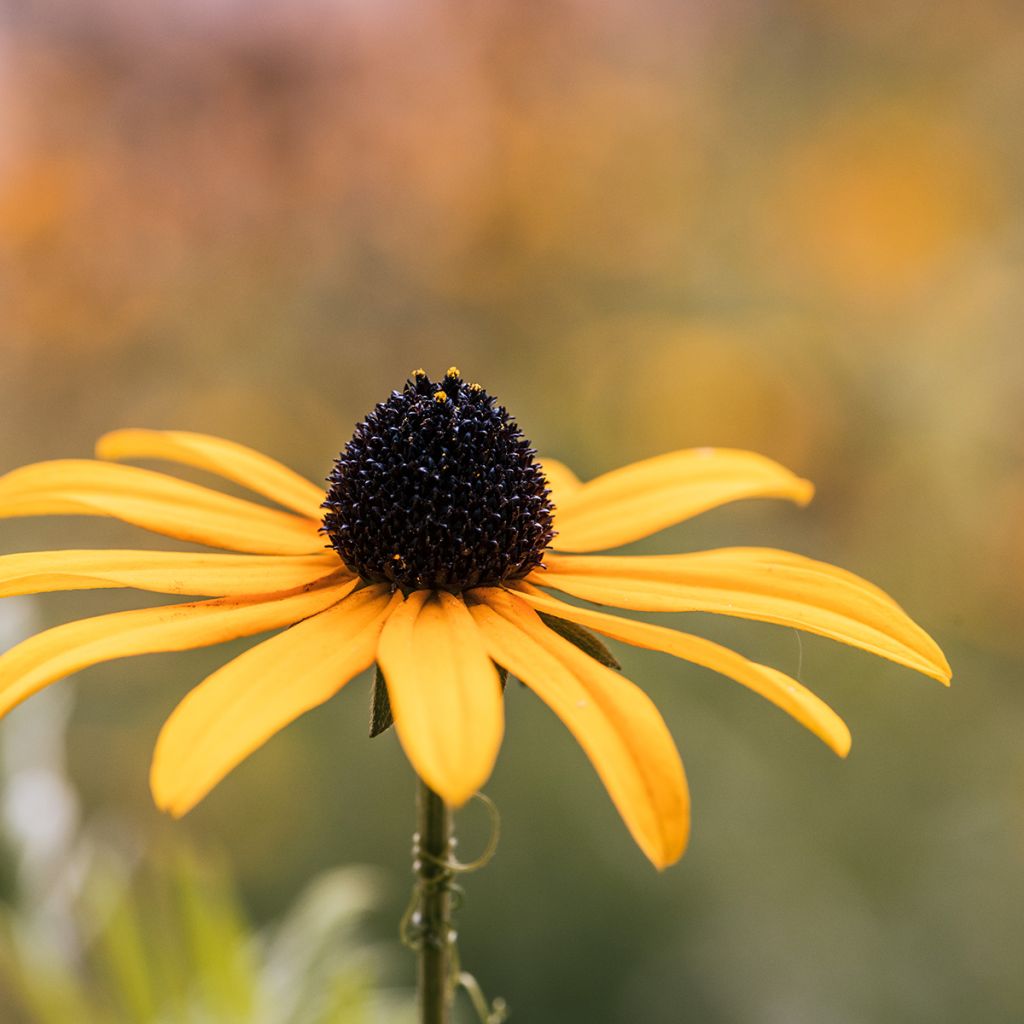

Echinacea paradoxa - seeds
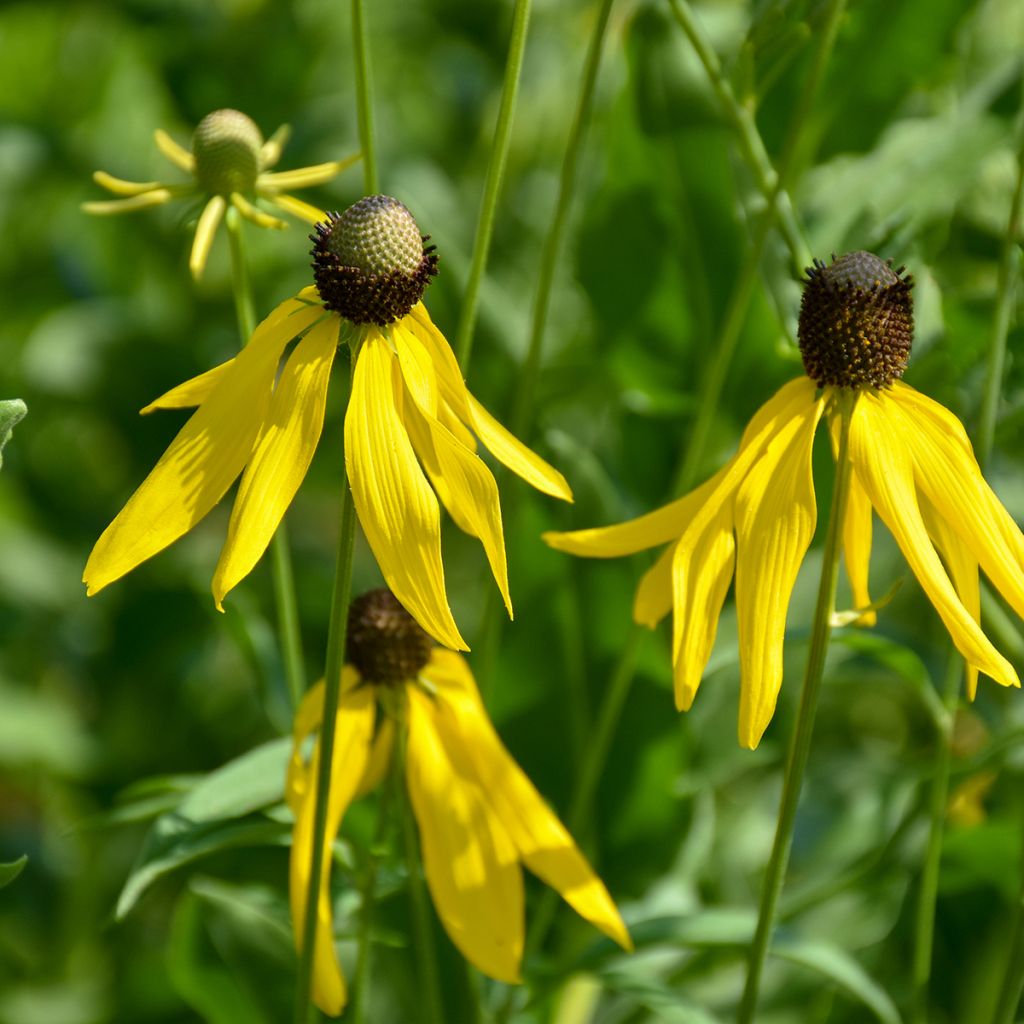

Echinacea paradoxa - seeds
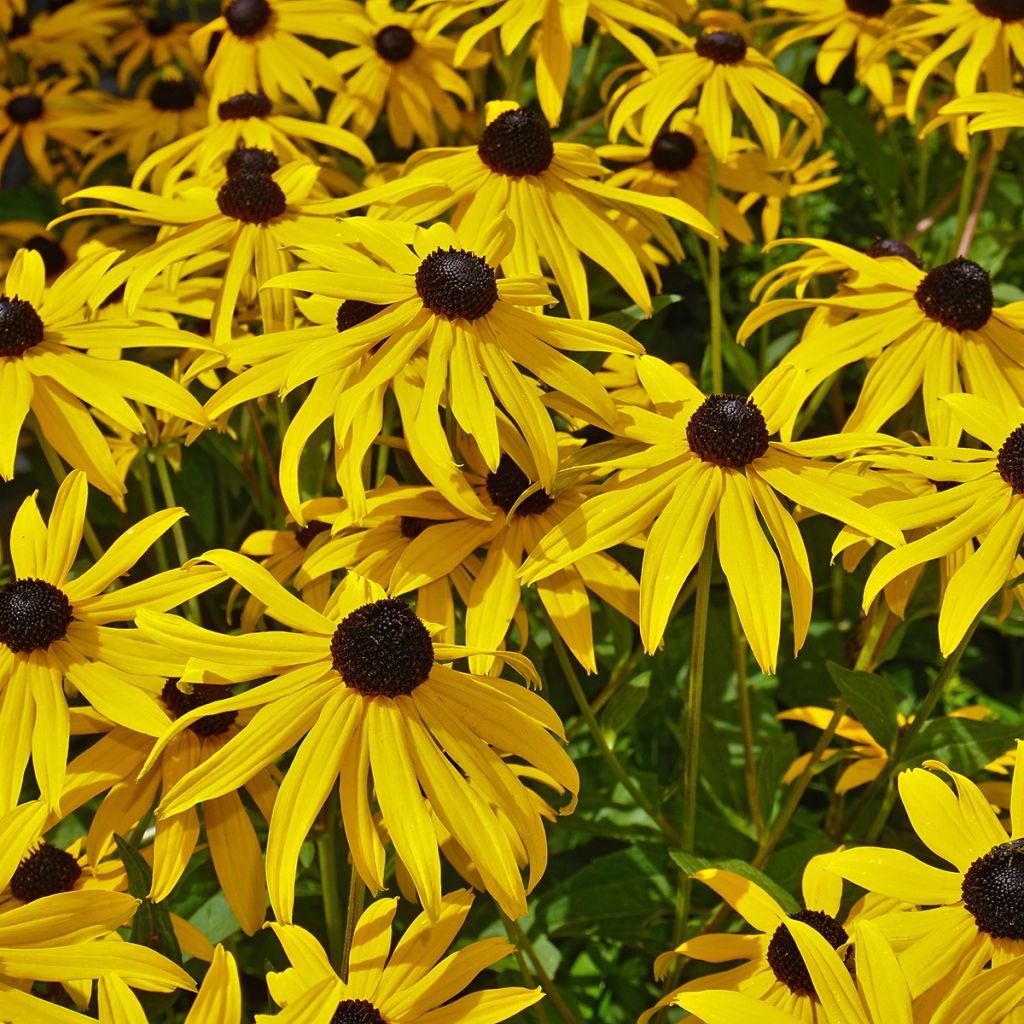

Echinacea paradoxa - seeds
Echinacea paradoxa - seeds
Echinacea paradoxa
Yellow Coneflower
This item cannot be shipped to the selected country
Dispatch by letter from €3.90
More information
Schedule delivery date,
and select date in basket
This plant carries a 6 months recovery warranty
More information
We guarantee the quality of our plants for a full growing cycle, and will replace at our expense any plant that fails to recover under normal climatic and planting conditions.
Seed-only orders are dispatched by sealed envelope. The delivery charge for seed-only orders is €3.90.
Does this plant fit my garden?
Set up your Plantfit profile →
Description
Echinacea paradoxa, or Yellow Coneflower, is a decorative perennial with many assets. Its flowering lasts almost all summer and is colourful and highly sculptural. Its large compound flowers, like daisies, are a very bright golden yellow and brighten up the flower beds. A central brown chocolate heart creates a strong contrast, while the pendulous petals on either side create an original and aesthetic design. A tall perennial that forms beautiful clumps in sunny locations.
Echinacea belongs to the vast family of Asteraceae (formerly known as Compositae, in reference to the structure of the inflorescences, composed of tubular flowers in the centre, and ligulate flowers on the periphery). There are nine species of Echinacea, all native to the United States, and closely related to Rudbeckias. Echinacea paradoxa grows wild in clearings and meadows in the states of Missouri, Arkansas, Oklahoma, and Texas. This species is unique in its yellow flowering while the others are generally pink-mauve or violet.
This herbaceous perennial plant forms vigorous clumps, reaching up to 90 cm high and 50 cm wide. From late spring, long rigid stems form, topped with large yellow flowers measuring 8 to 10 cm in diameter. The ligulate flowers on the periphery are yellow, while the small, tightly packed central tubular flowers form a dome of chocolate brown, together making a flower head. These compound "flowers" contrast beautifully with the medium to dark green foliage, consisting of very narrow leaves. This neactar-rich and fragrant Yellow Coneflower attracts numerous pollinating insects, such as bees and butterflies. If the stems and faded flowers are left in place, the dried heads will be very decorative in the winter garden, and the seeds can be eaten by birds.
The Yellow Coneflower will fit well in a mixed-border, a wide flower bed adjacent to a winding grassy path, typical of English gardens... or in a varied bed in the French or German style. When planted in a sunny location, this tall perennial will form the second rank alongside other tall flowers such as the superb Delphiniums (Delphinium). Choose blue varieties that will create striking contrasts. Campanula lactiflora Prichard will play the same role with its lush spikes of blue star-shaped flowers. At the edge, choose low-growing perennials to create layers of vegetation, such as Hemerocallis Poogie, with its large pastel pink star-shaped flowers, or Scabiosa Pink Mist, with its slightly deeper pink flowers throughout the summer.
The term Echinacea comes from the Greek word Echinos, meaning Hedgehog, in reference to the spiky seed cones of these plants. Echinacea is a medicinal plant used in homoeopathy as a short-term immune stimulant to prevent infections. This plant was also known to Native Americans who used its leaves to combat rheumatism and certain childhood diseases, and its roots to treat burns and toothaches.
Report an error about the product description
Flowering
Foliage
Plant habit
Botanical data
Echinacea
paradoxa
Asteracées
Yellow Coneflower
North America
Other Echinacea - Coneflower
Planting and care
Sow Echinacea paradoxa in spring, in March and April, after storing the seeds in the refrigerator at 4°C for 5 to 6 weeks to facilitate germination. Use a tray filled with seed compost, spread the seeds on the surface and cover them with a thin layer of compost. Then moisten and place at 15-20°C, in a propagator or a mini-greenhouse. Keep the substrate moist, but not excessively, germination usually occurs after 2 to 4 weeks. When the seedlings have reached the stage of 4 to 6 leaves, they are ready to be transplanted into pots to grow larger. Plant in the ground in autumn.
Choose a sunny or lightly shaded location, in ordinary to humus-bearing soil, not too dry to moist and very well-drained. Poor drainage is fatal to it, so it is strongly advised, in cold and humid regions, to place a dry mulch at its base during the winter season. This plant may take a little longer to establish, but then it is very perennial. It will flower the following summer after planting, with some watering in spring. Once well-rooted, it is relatively resistant to drought.
Removing faded flowers prolongs flowering, and in October, it is advisable to cut all stems to ground level. They can also be cut in February if you want to leave their decorative cones in place during the winter. Clumps tend to age poorly, so it is a good idea to divide them every two or three years (no more, as Echinaceas don't like to be transplanted too much...).
Sowing period
Intended location
This item has not been reviewed yet - be the first to leave a review about it.
Summer flowering perennials
Haven't found what you were looking for?
Hardiness is the lowest winter temperature a plant can endure without suffering serious damage or even dying. However, hardiness is affected by location (a sheltered area, such as a patio), protection (winter cover) and soil type (hardiness is improved by well-drained soil).

Photo Sharing Terms & Conditions
In order to encourage gardeners to interact and share their experiences, Promesse de fleurs offers various media enabling content to be uploaded onto its Site - in particular via the ‘Photo sharing’ module.
The User agrees to refrain from:
- Posting any content that is illegal, prejudicial, insulting, racist, inciteful to hatred, revisionist, contrary to public decency, that infringes on privacy or on the privacy rights of third parties, in particular the publicity rights of persons and goods, intellectual property rights, or the right to privacy.
- Submitting content on behalf of a third party;
- Impersonate the identity of a third party and/or publish any personal information about a third party;
In general, the User undertakes to refrain from any unethical behaviour.
All Content (in particular text, comments, files, images, photos, videos, creative works, etc.), which may be subject to property or intellectual property rights, image or other private rights, shall remain the property of the User, subject to the limited rights granted by the terms of the licence granted by Promesse de fleurs as stated below. Users are at liberty to publish or not to publish such Content on the Site, notably via the ‘Photo Sharing’ facility, and accept that this Content shall be made public and freely accessible, notably on the Internet.
Users further acknowledge, undertake to have ,and guarantee that they hold all necessary rights and permissions to publish such material on the Site, in particular with regard to the legislation in force pertaining to any privacy, property, intellectual property, image, or contractual rights, or rights of any other nature. By publishing such Content on the Site, Users acknowledge accepting full liability as publishers of the Content within the meaning of the law, and grant Promesse de fleurs, free of charge, an inclusive, worldwide licence for the said Content for the entire duration of its publication, including all reproduction, representation, up/downloading, displaying, performing, transmission, and storage rights.
Users also grant permission for their name to be linked to the Content and accept that this link may not always be made available.
By engaging in posting material, Users consent to their Content becoming automatically accessible on the Internet, in particular on other sites and/or blogs and/or web pages of the Promesse de fleurs site, including in particular social pages and the Promesse de fleurs catalogue.
Users may secure the removal of entrusted content free of charge by issuing a simple request via our contact form.
The flowering period indicated on our website applies to countries and regions located in USDA zone 8 (France, the United Kingdom, Ireland, the Netherlands, etc.)
It will vary according to where you live:
- In zones 9 to 10 (Italy, Spain, Greece, etc.), flowering will occur about 2 to 4 weeks earlier.
- In zones 6 to 7 (Germany, Poland, Slovenia, and lower mountainous regions), flowering will be delayed by 2 to 3 weeks.
- In zone 5 (Central Europe, Scandinavia), blooming will be delayed by 3 to 5 weeks.
In temperate climates, pruning of spring-flowering shrubs (forsythia, spireas, etc.) should be done just after flowering.
Pruning of summer-flowering shrubs (Indian Lilac, Perovskia, etc.) can be done in winter or spring.
In cold regions as well as with frost-sensitive plants, avoid pruning too early when severe frosts may still occur.
The planting period indicated on our website applies to countries and regions located in USDA zone 8 (France, United Kingdom, Ireland, Netherlands).
It will vary according to where you live:
- In Mediterranean zones (Marseille, Madrid, Milan, etc.), autumn and winter are the best planting periods.
- In continental zones (Strasbourg, Munich, Vienna, etc.), delay planting by 2 to 3 weeks in spring and bring it forward by 2 to 4 weeks in autumn.
- In mountainous regions (the Alps, Pyrenees, Carpathians, etc.), it is best to plant in late spring (May-June) or late summer (August-September).
The harvesting period indicated on our website applies to countries and regions in USDA zone 8 (France, England, Ireland, the Netherlands).
In colder areas (Scandinavia, Poland, Austria...) fruit and vegetable harvests are likely to be delayed by 3-4 weeks.
In warmer areas (Italy, Spain, Greece, etc.), harvesting will probably take place earlier, depending on weather conditions.
The sowing periods indicated on our website apply to countries and regions within USDA Zone 8 (France, UK, Ireland, Netherlands).
In colder areas (Scandinavia, Poland, Austria...), delay any outdoor sowing by 3-4 weeks, or sow under glass.
In warmer climes (Italy, Spain, Greece, etc.), bring outdoor sowing forward by a few weeks.

































